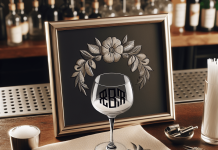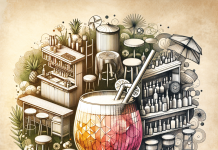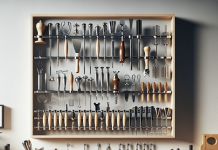In this article, we’re going to spill the secrets on how to shake the shaker like a seasoned bartender. You know, that impressive wrist-action that creates a symphony of flavors and a tantalizing presentation in your glass. Whether you’re a cocktail aficionado looking to up your game or simply want to impress your friends at your next gathering, we’ve got you covered. So, grab your shaker and get ready to shake it like a pro!
This image is property of images.unsplash.com.
Shaking Techniques
Shaking is one of the fundamental techniques that every bartender needs to master. A well-executed shake not only mixes the ingredients but also chills, dilutes, and aerates the cocktail, resulting in a perfectly balanced and refreshing drink. In this article, we will cover different shaking techniques, the types of shakers available, choosing the right shaker for your needs, correct form and posture, shaking techniques for different drinks, timing and duration, adding style and flair to your shakes, troubleshooting common shaking issues, comparing shaking to other mixing techniques, and finally, mastering the bartender shake.
Understanding the Basics
Before we dive into the specific shaking techniques, it’s important to understand the basics. Shaking involves combining the cocktail ingredients with ice in a shaker and vigorously moving the mixture to thoroughly mix and chill the drink. The ice cubes help to bring the temperature of the drink down quickly, resulting in a refreshing and cold cocktail.
Using the Two-Handed Grip
The two-handed grip is one of the most common shaking techniques employed by bartenders. To execute this technique, hold the shaker tightly with both hands, placing one hand firmly on the bottom half and the other on the top half of the shaker. This grip provides stability and control, allowing you to shake the cocktail with confidence.
Mastering the Hard Shake
The hard shake is characterized by quick, forceful movements that create a vigorous shaking action. This technique is ideal for cocktails that require thorough mixing and dilution. To perform the hard shake, firmly grip the shaker with both hands and vigorously shake the mixture up and down. The hard shake not only results in a well-mixed cocktail but also adds aeration, giving the drink a light and frothy texture.
Exploring the Soft Shake
In contrast to the hard shake, the soft shake is a gentler technique that is commonly used for delicate cocktails. This technique is ideal for drinks that need to be mixed and chilled without excessive dilution or aeration. To execute the soft shake, hold the shaker with a more relaxed grip and shake the mixture with smooth, controlled movements. The soft shake is perfect for preserving the integrity of the ingredients in a cocktail.
Experimenting with the Reverse Shake
The reverse shake is a technique that deviates from the traditional shaking motion. It involves starting the shake with the shaker in an upside-down position, so the larger tin is on top. This technique is often used when incorporating egg whites into a cocktail, as it helps create a rich and frothy texture. Start by pouring the ingredients into the larger tin, securely sealing the tin with the smaller one, and then execute a standard shaking motion. The reverse shake is an advanced technique that adds a touch of creativity to your cocktail repertoire.
Types of Shakers
Choosing the right shaker is crucial for achieving optimum results while shaking cocktails. There are several types of shakers available, each with its own unique features and advantages. Let’s explore the most popular types of shakers used by bartenders:
Boston Shaker
The Boston shaker is a classic and widely used type of shaker that consists of a glass and a metal tin. It offers versatility and ease of use, allowing bartenders to efficiently mix and strain cocktails. The glass portion of the Boston shaker allows you to monitor the ingredients’ appearance and provides a sturdy grip during shaking.
Cobbler Shaker
The cobbler shaker is a three-piece shaker that includes a metal tin, a built-in strainer, and a cap that doubles as a measuring device. This type of shaker is convenient for beginners and home bartenders as it eliminates the need for additional strainers. However, the built-in strainer can sometimes lead to slower pouring and less controlled straining.
Parisian Shaker
The Parisian shaker, also known as the French shaker, is a two-piece shaker consisting of two metal tins. This shaker offers a sleek and elegant design, making it a favorite among professionals. The absence of a built-in strainer allows for quick and efficient pouring, although an external strainer is required to strain the cocktail.
Yarai Shaker
The Yarai shaker is a Japanese-style shaker that is renowned for its stunning craftsmanship and intricate design. This shaker is typically made of stainless steel with a beautiful etched pattern on the surface. The Yarai shaker not only functions as a mixing tool but also adds an aesthetic element to your bartending setup.
Mixing Tin and Glass
If you’re looking for flexibility and customization, using a mixing tin and a separate mixing glass could be your best option. This setup allows you to choose the size and shape of both the tin and glass according to your preferences. A mixing tin and glass combo offers versatility, durability, and the ability to monitor the cocktail’s appearance during shaking.
Choosing the Right Shaker
Choosing the right shaker is essential for achieving the desired results and improving your bartending skills. Consider the following factors when selecting a shaker:
Consider Your Skill Level
Novice bartenders may find cobbler shakers or Boston shakers with a glass portion easier to handle, as they provide additional stability and control during shaking. As you gain experience and confidence, you can explore more advanced shakers such as Parisian or Yarai shakers.
Evaluate Your Preferences
Think about your personal preferences and style of bartending. Do you prefer the aesthetic appeal and elegance of a Parisian shaker, or do you value the versatility and simplicity of a Boston shaker? Understanding your preferences will help you choose a shaker that aligns with your bartending goals.
Assess the Drink Requirements
Consider the types of drinks you will be making most frequently. Different shakers excel at different tasks. If you specialize in classics like a Martini or Manhattan, a cobbler shaker with its built-in strainer may be the most efficient option. On the other hand, if you enjoy experimenting with different cocktails and techniques, a Boston shaker offers more versatility.
Weighing the Pros and Cons
Each type of shaker has its own advantages and disadvantages. Evaluate factors such as durability, ease of use, versatility, and the ability to monitor the cocktail’s appearance. Compare and contrast the different shakers to determine which one suits your specific needs and preferences.
Investing in Quality Shakers
Investing in high-quality shakers is crucial for both professional and home bartenders. Quality shakers not only last longer but also provide a better shaking experience. Look for shakers made of durable materials such as stainless steel, as they can withstand heavy use and regular cleaning. Good quality shakers also ensure a secure seal, preventing any leaks or spills during shaking.
Getting the Right Form
Achieving the perfect shake involves more than just selecting the right shaker and technique. The correct form and posture play a significant role in producing consistent and exceptional cocktails. Follow these guidelines to ensure you have the right form:
Maintaining Proper Posture
Maintaining a good posture is essential for executing shakes confidently and efficiently. Stand with your feet shoulder-width apart and keep your back straight. Avoid slouching or leaning excessively while shaking, as this can affect your balance and overall technique.
Holding the Shaker Correctly
Hold the shaker with a firm grip, ensuring that it’s tightly sealed to prevent any leaks or spills. The grip should be comfortable but secure enough to handle the shaking motion. Practice finding your grip and adjusting it as needed to find the most comfortable position for your hand size and strength.
Positioning Your Hands and Fingers
Place one hand firmly on the bottom half of the shaker and the other hand on the top half. This two-handed grip provides better control and stability during shaking. Your fingers should be placed on the outer rim of the shaker, allowing you to easily execute the shaking motion without straining your hand.
Understanding the Shake Dynamics
To achieve optimal mixing and chilling, understand the dynamics of the shake. Shake the cocktail with an up-and-down motion, moving your arms and wrists in a controlled and consistent rhythm. Avoid excessive side-to-side movements, as this may cause the shaker to leak. Practice finding the balance between a vigorous shake and a controlled motion.
Developing Consistent Motion
Consistency is key when it comes to shaking cocktails. Develop a steady and consistent shaking motion by practicing regularly. The more you practice, the more muscle memory you will develop, allowing you to execute the shake effortlessly and consistently every time.
This image is property of images.unsplash.com.
Shaking Techniques for Different Drinks
Different types of cocktails require different shaking techniques to bring out their flavors and achieve the desired texture. Let’s explore some popular cocktails and the shaking techniques they entail:
Shaking Margaritas and Daiquiris
Margaritas and daiquiris are refreshing and citrusy cocktails that benefit from a well-executed shake. To properly mix and chill these drinks, use the hard shake technique. The vigorous shaking will dilute the strong flavors of the alcohol and citrus, resulting in a balanced and refreshing cocktail.
Shaking Martinis and Manhattans
Martinis and Manhattans are classic cocktails that require a gentle and controlled shake. Employ the soft shake technique to preserve the flavors and integrity of the ingredients. Be mindful not to over-shake these drinks as it can lead to excessive dilution and a cloudy appearance.
Shaking Sours and Collins
Sours and Collins cocktails, such as the Whiskey Sour or Tom Collins, benefit from a vigorous shake to properly mix the ingredients and create a frothy texture. Utilize the hard shake technique for these drinks to incorporate the egg white and create a rich and velvety mouthfeel.
Shaking Tiki Cocktails
Tiki cocktails are known for their complex flavor profiles and vibrant colors. To properly mix and dilute these drinks, employ a combination of the hard and soft shake techniques. Start with a hard shake to thoroughly mix the ingredients, followed by a soft shake to maintain the tiki cocktail’s tropical flavors.
Shaking Creamy and Egg-White Drinks
Creamy and egg-white drinks, such as the Ramos Gin Fizz or the Pisco Sour, require a longer and more vigorous shake. Incorporating the reverse shake technique can help create a smooth and frothy texture, ensuring the ingredients are fully incorporated and aerated.
Timing and Duration
Timing and duration are crucial aspects of shaking that can greatly influence the quality of your cocktails. Let’s dive into understanding the ideal shake duration, assessing the drink ingredients, recognizing signs of over- or under-shaking, experimenting with shake intensity, and developing a sense of timing.
Understanding the Ideal Shake Duration
The ideal shake duration varies depending on the cocktail and the desired texture. As a general rule of thumb, a cocktail should be shaken for approximately 10-15 seconds. However, some cocktails may require a longer or shorter shake. Over-shaking can lead to excessive dilution and a cloudy appearance, while under-shaking may result in an unbalanced and under-chilled drink.
Assessing the Drink Ingredients
Consider the ingredients of the cocktail when determining the shake duration. Cocktails with delicate flavors require a shorter shake to avoid over-dilution, while cocktails with strong flavors may benefit from a longer shake to properly mix and mellow the ingredients. Experimentation and taste-testing are essential in finding the optimal shake duration for each specific drink.
Recognizing Signs of Over- or Under-shaking
Over-shaking can be easily identified by the excessive foam or bubbles that form when pouring the drink. Additionally, a cloudy appearance indicates that the drink has been over-diluted. Under-shaking can result in a drink that is not properly mixed or chilled, providing an unbalanced flavor profile. Paying attention to these visual cues will help you adjust your shaking technique and duration accordingly.
Experimenting with Shake Intensity
The intensity of the shake can greatly impact the overall texture and flavor of the cocktail. Experiment with the intensity of your shake to find the perfect balance. A harder shake will result in a more frothy and aerated drink, while a gentler shake will yield a smoother and more delicate mouthfeel. It’s important to adapt your shake intensity based on the specific cocktail and your personal preferences.
Developing a Sense of Timing
Developing a sense of timing is a skill that comes with practice and experience. Pay attention to the changes in the sound and movement of the shaker during shaking. As you become more familiar with the ingredients and the desired texture of the cocktails you regularly make, you will naturally develop an intuition for the ideal shake duration.
This image is property of images.unsplash.com.
Adding Style and Flair
Bartending is not only about creating delicious cocktails; it’s also an opportunity to showcase your style and flair. Elevate your shaking technique by incorporating some impressive moves and techniques. Let’s explore how you can add style and flair to your shaking:
Practicing Bottle and Tin Flips
Bottle and tin flips are impressive techniques that require skill and practice. Mastering these moves adds a visual element to your bartending, leaving a lasting impression on your guests. Start with simple flips and gradually progress to more advanced tricks as you gain confidence.
Incorporating Professional Tricks
Professional tricks, such as spinning the shaker mid-air or incorporating multiple shakers in one shake, are a guaranteed way to captivate your audience. These tricks require extensive practice and coordination, but the results are well worth the effort. Experiment with different professional tricks and find the ones that best suit your bartending style.
Showcasing Double Strain Methods
Double straining is a technique used to achieve a perfectly smooth and debris-free cocktail. To showcase your attention to detail, use a Hawthorne strainer in combination with a fine mesh strainer to remove any small ice fragments or pulp from the drink. This technique adds an extra layer of sophistication to your shaking routine.
Playing with Garnish Techniques
Garnishes not only enhance the appearance of a cocktail but also contribute to its overall taste and aroma. Experiment with different garnish techniques to add a touch of creativity and flair to your finished drinks. Whether it’s a perfectly twisted citrus peel or an intricate sugar rim, the possibilities are endless.
Learning from Experienced Bartenders
To truly master the art of adding style and flair to your shaking, learn from experienced bartenders. Attend workshops or classes led by industry professionals and watch online tutorials to gain insights into their techniques and practices. Remember, practice makes perfect, so don’t be afraid to experiment and add your own unique flair to your shaking routine.
Troubleshooting Common Shaking Issues
As with any skill, bartending comes with its fair share of challenges. Troubleshooting common shaking issues is essential for delivering consistently excellent cocktails. Let’s explore some common shaking problems and their solutions:
Preventing Leaks and Spills
To prevent leaks and spills during shaking, ensure a secure seal between the shaker tins or glass. Check for any cracks or damage that may compromise the seal. Additionally, avoid overfilling the shaker with ingredients and ice, as this can lead to spills when shaking.
Dealing with Stuck Shakers
Stuck shakers can be frustrating and time-consuming. If you encounter a stuck shaker, tap the sides of the shaker gently with the palm of your hand to loosen the seal. Alternatively, you can try running the shaker under warm water to expand the metal and release the seal.
Addressing Insufficient Chill
If your cocktail is not chilled enough after shaking, consider increasing the shake duration or adjusting the intensity of your shake. Insufficient chilling may be caused by factors such as warm ingredients or a lack of ice. Ensure that your ingredients are properly chilled and use enough ice to bring the drink to the desired temperature.
Fixing Drinks with Incorrect Dilution
Over-dilution or under-dilution can significantly impact the balance and flavor of a cocktail. If a drink is over-diluted, adjust your shake duration to be shorter, ensuring that you shake with less vigor. If a drink is under-diluted, increase the shake duration or apply a harder shake to achieve a better balance of flavors and dilution.
Avoiding Excessive Foam or Bubbles
Excessive foam or bubbles can occur when a cocktail is shaken too vigorously or for too long. If you consistently encounter this issue, consider adjusting your shake intensity or duration. By finding the right balance between a vigorous shake and a controlled motion, you can minimize the amount of foam or bubbles in your finished drink.
Comparing Shaking to Other Mixing Techniques
While shaking is a staple technique in bartending, it’s important to understand how it compares to other mixing techniques. Let’s explore the differences and benefits of shaking compared to stirring, rolling, and blending:
Shaking vs. Stirring
Shaking and stirring are both essential techniques in mixology, but they yield different results. Shaking incorporates more aeration and dilution, resulting in a more chilled and frothy drink. Stirring is ideal for delicate cocktails, preserving the drink’s clarity and maintaining flavors without adding excessive dilution or aeration.
Shaking vs. Rolling
Rolling is a gentle mixing technique where the cocktail is poured back and forth between two vessels. This technique is often used for layered cocktails or when a drink requires minimal dilution. Shaking, on the other hand, provides better mixing and chilling due to the vigorous shaking motion. The choice between shaking and rolling depends on the specific drink and the desired outcome.
Shaking vs. Blending
Blending is predominantly used for frozen or slushy cocktails, incorporating ice and ingredients in a blender to create a smooth and icy texture. While blending is ideal for frozen drinks, shaking is the preferred technique for chilled and non-frozen cocktails. Shaking allows for better mixing and dilution, producing a refreshing and well-balanced beverage.
When to Shake and When Not to Shake
Knowing when to shake and when not to shake is crucial for maintaining the integrity of a cocktail. As a general rule, shake cocktails that include citrus juices, cream, eggs, or other ingredients that benefit from thorough mixing and aeration. Stir cocktails that are predominantly alcohol-based or those that require minimal dilution and aeration.
Considering Drink Texture and Ingredients
When deciding between shaking and other mixing techniques, consider the desired texture and the ingredients used in the cocktail. Shaking is ideal for creating a frothy and aerated texture, while stirring provides a smoother and more delicate mouthfeel. Additionally, take into account the flavors and characteristics of the ingredients to determine which technique will best preserve their qualities.
Mastering the Bartender Shake
Mastering the bartender shake requires time, practice, and dedication. By following these tips and techniques, you can elevate your shaking skills and become a confident and efficient bartender:
Developing Muscle Memory
Shaking cocktails should become second nature through muscle memory. Practice regularly and consistently to train your muscles to perform the shaking motion effortlessly. The more you repeat the motions, the easier it becomes to execute a well-balanced and controlled shake.
Continual Practice and Improvement
Bartending is an ongoing learning process, and shaking is no exception. Continually practice and seek opportunities to improve your shaking technique. Experiment with different ingredients, shakers, and recipes to expand your knowledge and skillset. Be open to feedback and constantly strive to refine and perfect your shaking skills.
Creating Your Signature Shake
Developing a signature shake is a fun way to showcase your personal style and flair as a bartender. Experiment with different shaking techniques, garnishes, and presentation styles to create a unique and memorable shake that reflects your personality. A signature shake can set you apart from other bartenders and leave a lasting impression on your customers.
Gaining Efficiency and Speed
Efficiency and speed are essential qualities of a skilled bartender. Practice your shaking technique to ensure swift and fluid movements. Minimizing unnecessary motions and focusing on efficiency will increase your speed behind the bar, allowing you to serve more customers without compromising the quality of your drinks.
Confidence and Showmanship
Lastly, don’t forget to exude confidence and showmanship while shaking cocktails. Your customers will appreciate the skill and precision you bring to the craft. Maintain eye contact, engage with your audience, and let your passion for mixology shine through. An enthusiastic and confident shake will enhance the overall experience for both you and your guests.
In conclusion, shaking like a bartender involves understanding the basics, mastering different techniques, selecting the right shaker, maintaining proper form, shaking specific drinks, perfecting the timing, adding style and flair, troubleshooting common issues, comparing shaking to other techniques, and ultimately, mastering the art of the bartender shake. With practice and dedication, you can become a proficient shake master, delighting your guests with perfectly mixed and visually stunning cocktails. So grab a shaker, pour in the ingredients, and shake with confidence – cheers to a fantastic bartending journey!













































